How Media Companies Can Leverage Digital Marketing and Integration to Grow the Business



Today’s media companies are expected to be at the forefront of innovation, both when it comes to the content they produce and to the ways they market that content.
Remember Netflix’s Black Mirror episode where you could choose the ending? It was beyond cool. But it was also SO last year!
What can media companies do to quench consumers’ thirst for innovation? How can they win consumers’ hearts (and wallets)?
This guide goes in-depth analyzing digital marketing tactics and integration — all in an effort to help your media company gain the spotlight.
What Is Digital Marketing?
While today’s digital marketing simply means marketing, it goes beyond the use of conventional methods of promoting and selling goods and services. This type of marketing entails the leveraging of online marketing techniques such as email marketing, search marketing, and social media marketing — to name only a few of the tools at your disposal. Additionally, strategies like social media scraping are employed to gather valuable insights from online platforms, further enhancing the effectiveness of digital campaigns.
This is exactly how modern businesses are making themselves and their products are known to their target audience.
The beauty of digital marketing is that its benefits cut across all industries, including the media industry. By media companies, we are not only referring to organizations that offer print, television, and radio broadcasting services. Not at all!
The media industry is massive! It covers a wide array of streams ranging from advertising, networking, broadcasting, news, print and publication, digital, recording, as well as motion pictures.
The media industry is estimated to attain a worth of USD 2.6 trillion by 2023. See the graph below.
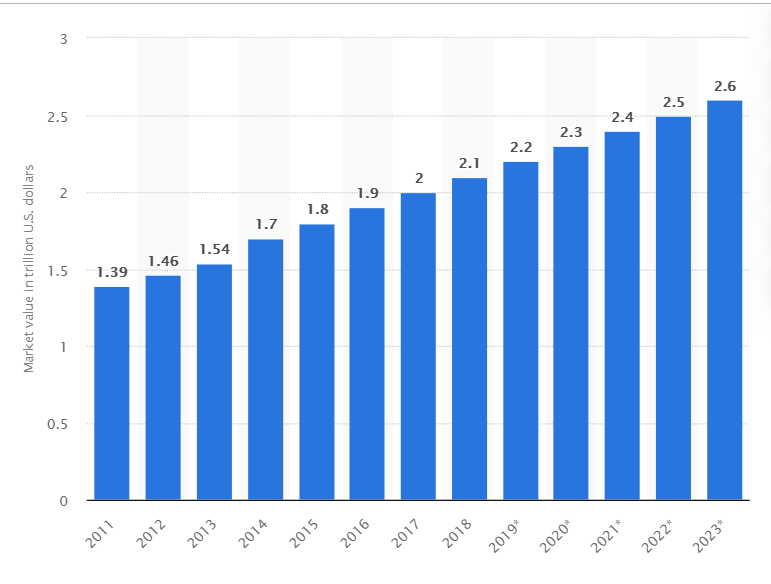
Image source: Statista
With such a promising future, media companies must not become complacent, but instead, align themselves accordingly to reap the projected harvests moving forward. One way of ensuring business growth is leveraging digital marketing and integration.
Why is digital marketing something that businesses mustn’t miss?
As digital marketing continues to evolve its benefits become more apparent. Here are some of the reasons media businesses must adopt various digital marketing techniques.
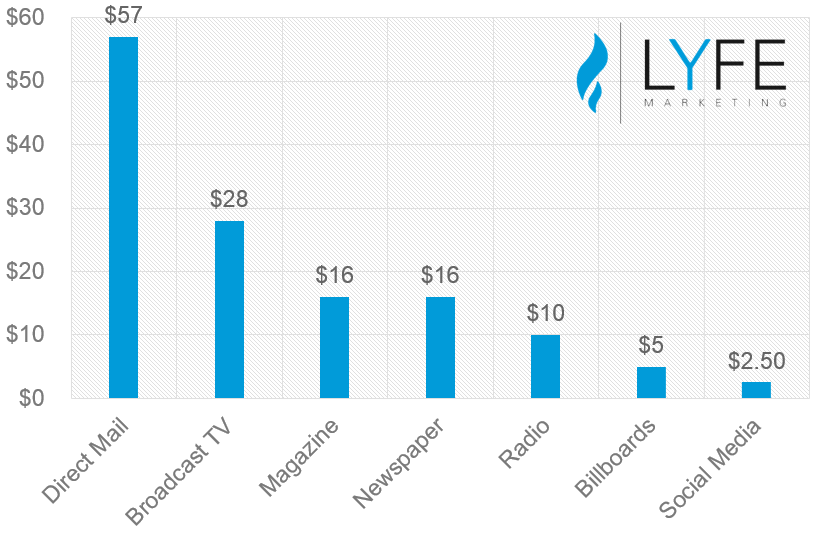
Image source: LYFE Marketing
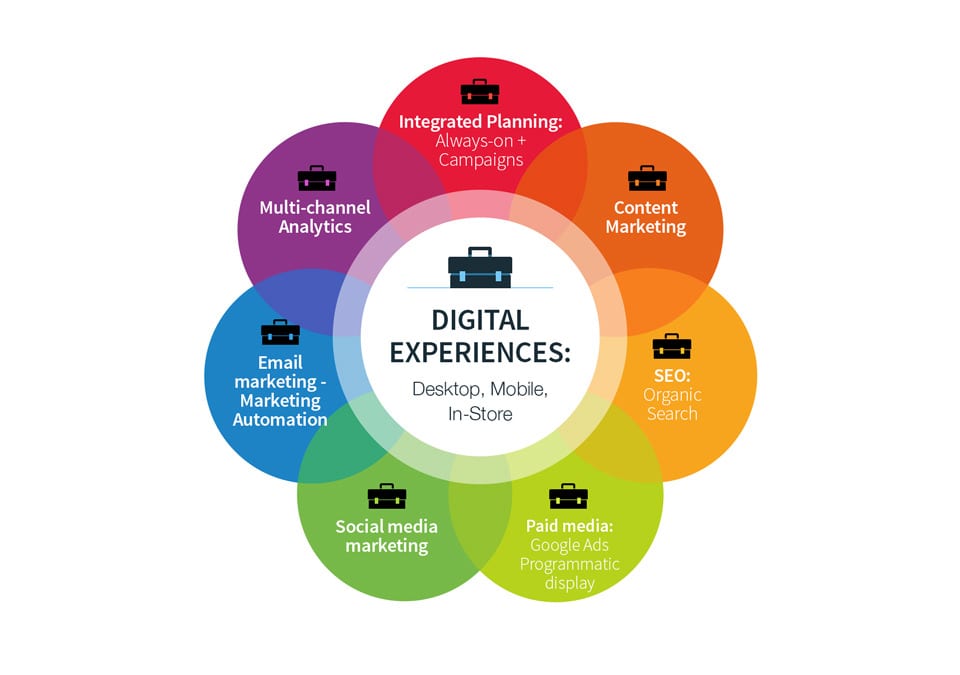
Image source: Smart Insights
4 Ways of Leveraging Digital Marketing to Ensure Business Growth
In this article, we take a look at some highly-effective, easy-to-implement techniques that you can adopt for your media business to help you make the most out of your digital marketing efforts.
Personalization entails paying attention to the needs and preferences of your target market. This strategy helps media companies to market the right products to the right person and at the right time. It makes your customers feel that they are being heard, which generates more meaningful interactions, and in turn, increased conversion rates.
As already mentioned, modern consumers are keen on finding personalized services. That’s where they are most likely to give their loyalty. You can easily achieve this through digital marketing. Begin by linking your database to your website – if you haven’t done it already.
Each time a person re-visits your website, welcome them with targeted offers. If the greeting yields return purchases, use the information you gather to refine customer profiles, an effort that will help you market more effectively to them.
You don’t want to deal with the aftermath of customers ditching you for the competition. It is, perhaps, the most unpleasant thing to happen to any company.
For instance, in 2017, 41 percent of consumers switched brands, citing reasons such as lack of trust and poor personalization, according to Accenture. The reiteration cost organizations in the United States a whopping $756 billion.
That is how important personalization is amongst modern consumers. It shows that the appetite for personalized products and services is bigger today compared to the past decades. The appetite has grown so much that consumers have shown readiness to pay a premium price for products they consider unique to them.
Unlike in the past, they do not mind sharing personal data as long as they can receive personalized offers and recommendations.
The premium consumers are prepared to pay for a customized product or service by category
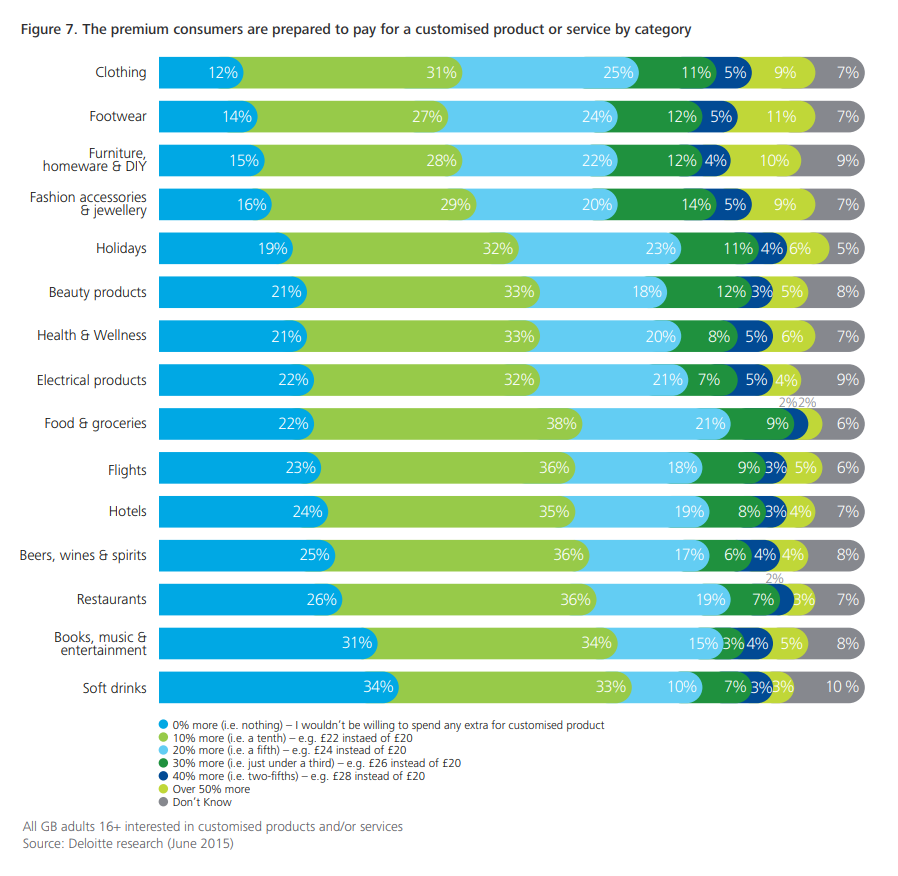
Image source: AB Tasty
Above you can clearly see the percentage of people who would be willing to pay more than the market price in exchange for a customized product/service. Pay extra attention to the books, music and entertainment category at the bottom of the graph.
A whole 34 percent answered in the affirmative as far as their willingness to pay 10 percent more for a product/service is concerned. Your media company cannot afford to ignore these interesting, eye-opening statistics.
Netflix and YouTube have reaped massive benefits from personalization. Their ability to create one-to-one marketing experiences for their customers is one of the reasons they continue to conquer the world of media.
Ready to do the same?
It begins with the collection of ample and qualitative data about your target audience. Note that the volumes of recommendations you get are dependent on the experiences that your customers have with your brand. Make it worthwhile.
However, do note that nothing is perfect, not even AI/ML-based personalization. Some of the personalization issues have become memes:

Image via Reddit
Those two aren’t quite related, right?
Right!
This was an undeniable glitch on Netflix’s recommendation engine, right?
Right!
BUT the fact that this is NOT the only meme about Netflix recommendations (or Netflix in general) tells us two things:
According to We Are Social, the number of internet users across the globe has grown by 400 since October 2018 – a 10 percent yearly growth. Out of the 4.388 billion global internet users in 2019, 3.484 billion are social media users. The number of people using mobile phones grew by 2 percent to 5.112 billion.
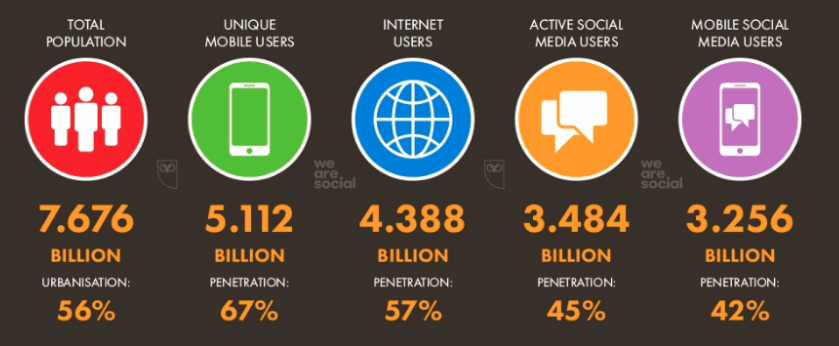
Image source: Smart Insights
The world’s biggest social media platform, Facebook, has 2.4 billion users, with WhatsApp and YouTube also enjoying a huge following in excess of one billion. The world population stands at about 7.7 billion people. With over 3 billion people spending time on social media, this spells good news for businesses.
Irrespective of the reasons for this growth, the figures are undoubtedly quite encouraging. Internet and the rise of social media have changed and continue to change the world. The diagram below illustrates the number of social media users by the platform.
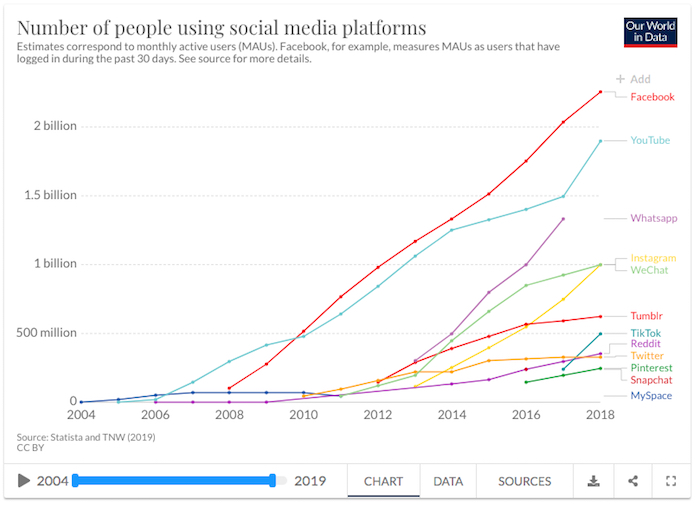
Image source: Our World in Data
Media companies must seek to squeeze maximum value out of their social media marketing efforts. Consider taking ample time to determine the most effective platform to pay the most attention. Do not stick to only one social platform. Determine which platforms can back up the major one depending on the traits of your audiences.
While Facebook remains the market leader, other platforms such as Instagram are also exhibiting exponential growth. Instagram’s visual nature comes in handy when targeting younger generations. You cannot ignore the value that Twitter, Pinterest, and Snapchat bring to the table.
The same goes for ‘dark social outlets’ (social media networks where you can’t easily pinpoint the source of traffic or shares) like WhatsApp. The most important thing is to understand your target audience first, establish their social media patterns and behaviors, and then create a digital marketing strategy around these elements.
It doesn’t end there. You also need to show the world, and especially your target market, that you have built relationships with recognized players in the industry.
This is where influencers come into play. Influencers are people who enjoy a huge (or at least above average in the case of micro-influencers) social media following and are renowned personalities in the media industry.
If you are currently working on scaling your media firm, one of the greatest moves for your company right now is identifying an appropriate influencer. Influencer marketing is top on the list of the best and fastest ways of building a brand online and also raising awareness among a company’s target audience. It is even growing at a faster rate than digital ads.
Other benefits of influencer marketing are found in its ability to enrich your company’s content strategy, reach the target audience effectively, offer incredible value to the customers, and the fact that it wins win-win partnerships.
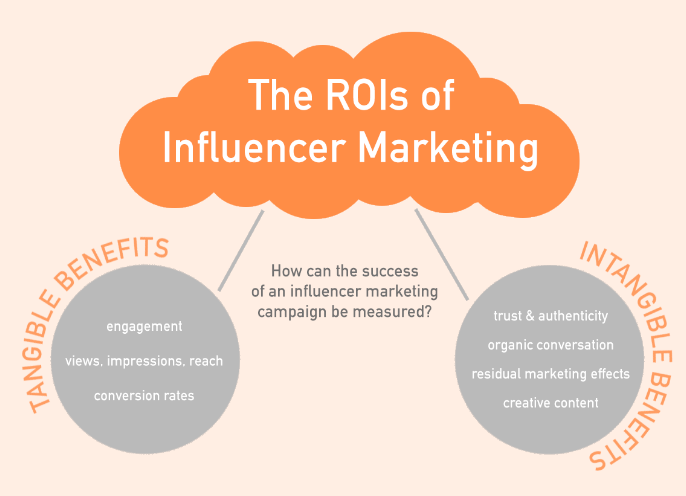
Image source: SIDE BUY
When it comes to going social, influencer marketing taps into the visibility of the identified influencer in various ways, namely:
Influencer marketing gives you an opportunity to connect with people who are already interested in your product. Whatever happens next is dependent on what you will do with the new connections.
Well, at least part of it. There’s the content you create to sell — videos, music, books, TV shows, movies and so on — and the content you create to promote the one you’re selling — blog posts, whitepapers, trailers, teasers, social media posts and so on.
Making sure that the two are aligned and in perfect sync is not always the easiest job. But it can be done by ensuring that your departments are working together and that all of your staff knows how to use the same tone of voice and branding across all your digital channels.
Another thing that media companies need to do is to always match their content to every phase of a buyer’s journey. What is the point of targeting an ad for a sales demo to prospective clients who are already in the awareness phase? It doesn’t make sense! Instead, consider using a live stream, which would be more engaging and relevant for audiences in the earlier stages of their journey, as it provides valuable information and builds brand awareness. If you need a stream recording solution, streamrecorder.io offers a powerful stream recorder solution that Leverage Digital Marketing and Integration to Grow the Business.
The same case applies to a situation where a marketer targets an awareness phase offer at a person who has already made the decision to buy. I’m looking at you, annoying remarketing ads!

Image source: HubSpot
Spend time learning about the interests of your target audience. The information you gather will help you create content that matches their interests and what your media company can offer.
For instance, if you are selling video content, you might create a blog series on topics around leisure and relaxation, work-life balance and so on.
A great content strategy incorporates search engine optimization. Sadly, many companies, especially SMEs, shy away from SEO because they think it is complex and time-consuming.
They haven’t realized that it is the most effective way of ensuring the growth of traffic in the long term. A simple detail search as the name of your business can potentially improve your ranking on search engine results pages.
Your SEO efforts should focus on broad aspects such as website optimization, page optimization, device optimization as well as credible link building. These aspects are further narrowed down to include elements such as keyword usage, which falls under page optimization. Familiarize yourself with SEO best practices to make the most out of your overall content strategy.
Amongst the leading innovations in the world of digital marketing are artificial intelligence (AI) and machine learning (ML). The introduction of the two components was aimed at helping to streamline marketing processes and making businesses more effective.
A research conducted by QuanticMind revealed that 97 percent of leaders are convinced that the manner in which digital marketers work alongside tools based on machine learning will determine the future of marketing.
What does this mean for digital marketers? World-class marketers must learn how to use machine learning and AI tools in their digital marketing strategies. ML and AI are distinct entities that complement each other.
AI aims at harnessing particular areas of the thinking mind. On the other hand, ML increases the efficiency with which human beings solve problems. ML is technically a subset of AI and it utilizes data to learn how to complete a task using AI capabilities.
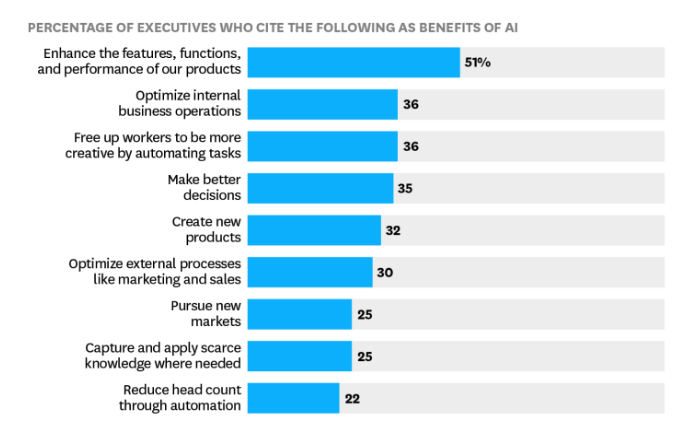
Image source: Harvard Business Review
Machine learning is your surest bet when it comes to the identification of the most effective solutions to a wide array of complex digital marketing problems. It is an advanced tool that helps digital marketers to find the knowledge hidden in the consumer data available, and in turn, streamline a company’s marketing processes.
In which areas can digital marketers apply machine learning?
Some digital marketers are afraid of a completely automated world where artificial intelligence robotics will take over their jobs. It explains why most of them have shown hesitation to embrace AI and machine learning.
There is no need to worry, though! You will be operating hand-in-hand with ML-based automation products. The moment you’ve been waiting to eliminate routine tasks so that you can concentrate on the more creative aspects of your work is finally here.
That’s means that media companies must prepare their digital marketing teams accordingly to ensure a seamless transition as and when a need arises.
How to Leverage Integration to Grow Your Media Business
The ultimate undeniable focus for every business is its growth. But one question still lingers. What is the best and inexpensive way to attain and even surpass the desired level of growth? Answer – integration.
Modern businesses are using technology to not only automate but also to re-engineer and integrate most of their operational processes. In return, they get streamlined processes, enhanced scale, reduced operation costs and higher production times.
Business integration is driving modern organizations. It is a critical catalyst for growth in the media industry. The integration allows companies to leverage existing processes, information as well as technology, and in turn, stay many steps ahead of the competition.
The struggle is imminent when it comes to the handling of the ever-growing data that companies collect from their people, suppliers, and clients. The struggle is even bigger for businesses that are growing rapidly. Failure to align your systems and processes translates to time wastage because you have to manage everything separately.
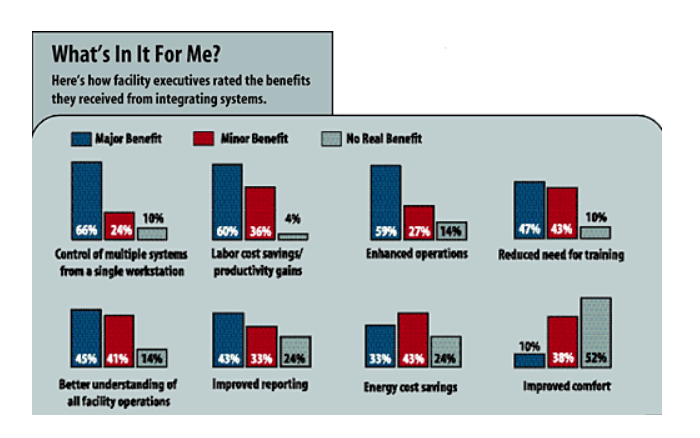
Image source: Facilities net
Organizations that fail to integrate are always complaining about significant increases in cost and resource consumption. A properly integrated system also allows access to valuable customer data.
For instance, companies such as PBS and Vimeo, the largest public media firm in America, are using integration to bridge the gaps between several business functions. Vimeo and Public Broadcasting Service use SyncApps to integrate Mailchimp and Salesforce.
Another integration that has worked wonders for media companies is NetSuite to Infusionsoft. Connecting your financials and CRM to your marketing efforts adds up to better campaigns and better ROI for every dime you spend in every department.
The NetSuite to Infusionsoft integration powered by SyncApps by Cazoomi isn’t just for large corporations. Quite the opposite, in fact.
Our solutions are tailor-made for small companies that want to put their growth on auto-pilot. More importantly, they are priced so that any media company (even micro-influencers who create videos) can afford them. After all, who can’t afford FREE software integration?
Other benefits of integrating systems include improved communication, data accessibility, productivity, and robust growth – since you’ve eliminated the disruptions arising from having data in different places.
Irrespective of what you want to achieve, the adoption of an integrated approach is the best way to accomplish your objectives.
Conclusion
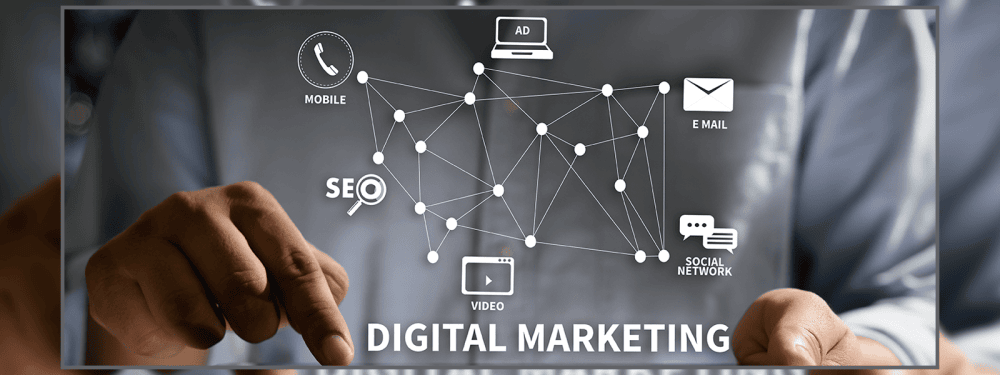
By now you must have realized the incredible opportunities that await your media company if you leverage integration and digital marketing. The above tips aren’t everything you can do to rock digital marketing, but they the most important tactics you can apply.
Pursue personalization; devise an all-inclusive content strategy; embrace artificial intelligence and machine learning, and don’t be left behind on matters of social media marketing.
As you continue to embrace more and more technologies that cater to the needs of your business, find the right integration partner. In this day and age, you shouldn’t be complaining about difficulty in data handling and management. Your company shouldn’t have any challenges bridging gaps between the various processes and data silos.